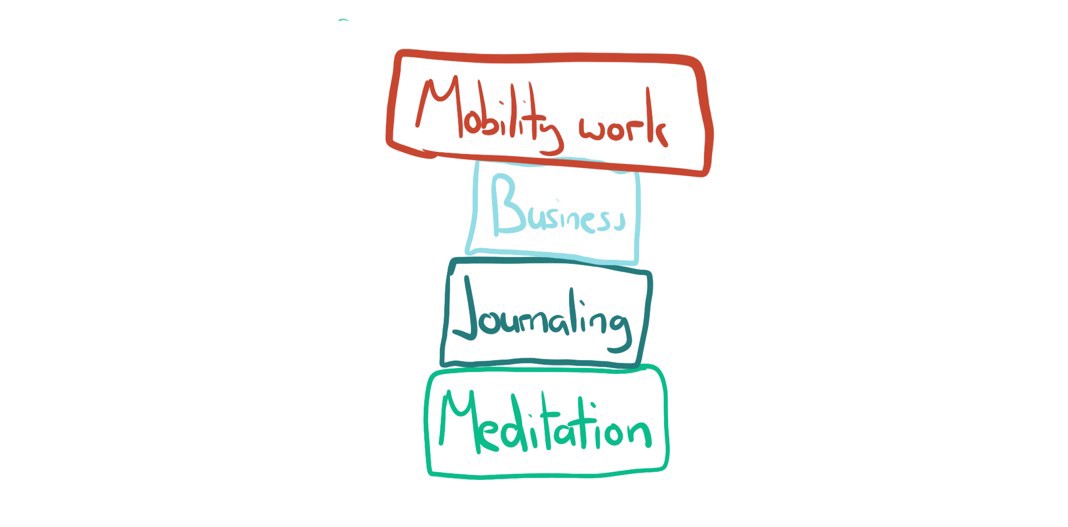.png)
Mindfulness is often cited as one of the simplest practices to implement to live a happier, healthier, and more intentional life.
But when we get into the science behind mindfulness, things get a little…tricky. Often the neurological data used to support claims around the efficacy of mindfulness is from monks, who dedicate thousands of hours to the practice over their lifetime or those who suffer from some kind of mental health condition, such as chronic anxiety or depression.
But what can the ‘average’ mediator, who doesn’t have any severe mental health conditions but also can’t dedicate hours a day to the practice hope to achieve?
As someone who’s meditated for 20 minutes every day for the last 6 years, I’d like to share my insights on my experience — the good and the bad, so you can help set proper expectations, whether you have been practicing meditation for a while, or are considering trying it out.
Before I started meditation my Myers-Briggs personality type was ‘The Commander’ (ENTG), one of the traits being extroversion. The last time I took the exam I was ‘The Architect’ (INTG), so more of the introverted side of things.

Generally, I’ve noticed that since beginning to meditate I’ve felt more comfortable being alone for extended periods of time, and this makes intuitive sense — meditation is a practice that is built on being comfortable with nothing but silence and your breath.
Of course, it’s impossible to isolate mediation from other changes that have occurred in my life over the last 6 years. Having said that, I’d always advise people who are considering taking up a meditation practice to ask themselves this question: Are you OK that your personality may change? If the answer to this is no, perhaps meditation is not for you.
I think the most underrated benefit of meditation is how well it lends itself to stacking other habits on top of it.

Before I started meditation I went to the gym and that was about it, but since I started it has acted as a real springboard to other positive habits such as journaling, deep work on my own business, my YouTube channel, writing, and others.
I believe the reason for this is that meditation in many ways is such an easy habit to stick too. Even if you don’t feel like it you can sit down and effectively doss around for 20 minutes, even though it won’t be an effective session, it will be effective for habit building, and this gives you the confidence that you can build other habits into your life as well.
Remember that kid at school who‘d always smoke you in the 100-yard dash? Or the one who was doing calculus while you were still figuring out your long division? This is natural talent. And while of course, it can only get someone so far, it’s important to recognise it exists, in all of life’s pursuits — meditation is no different

I think its important to understand this because if you hear someone preaching about how implementing a mindfulness practice massively changed their lives, it doesn’t mean it will have the same effect for you.
I understood this so clearly when I started going on retreats with friends. What struck me was how differently different they reacted to their first meditative experiences. Some struggled through, much as I had done, not really getting much from the initial experience. Others picked it up rapidly, and when they described their experiences to me, it sounded like they were able to get into much deeper states than I could, even though I had significantly more experience.
I think the takeaway here is don’t be disappointed if meditation doesn’t seem to have much effect when you first start out. We all start from a different place, the only person to compare yourself to — is you.
If you’d been practicing kickboxing every day for 6 years, you’d expect to be able to hold your own in a street fight. Likewise, if you spent that time learning a language you’d be disappointed if you couldn’t hold a conversation at a bar.
Meditation is a slightly different kind of skill because the changes in the practice are so slow and so subtle, and because there is no objective comparison to act as a benchmark for how you can doing, it can often feel like you aren’t making any progress at all.

In fact, I think this complete lack of a feedback loop in learning mediation is one of the reasons people fail to make the habit stick — they don’t see the progress they expected.
What you will find is its actually those closest, to you — your friends and family who first notice the effects of your practice. ‘You seem calmer’ and other such comments are hints that something is actually happening, so make sure you look out for them!
If you enjoyed this article, you can check out the accompanying video, where I go into a bit more detail about some of the ways meditation has personally affected me.